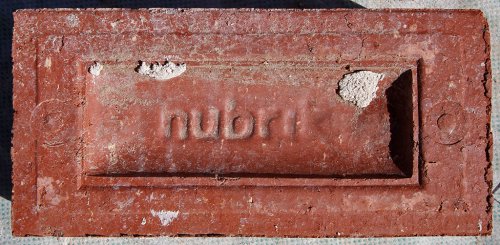
The naming of bricks was not only a British custom, below are a few I have been sent from foreign parts.

David Kitching spotted this one in Broken Hill, new South Wales. He writes:'nubrik' is a new product of Australbricks which was established as the Austral Brick Company in 1908 and is now part of the Brickworks Limited group.
.jpg)
Seen in Ballarat by Alan Murray-Rust.
.jpg)
Sandhurst, 1858 - 1958. Seen in Bendigo by Alan Murray-Rust.
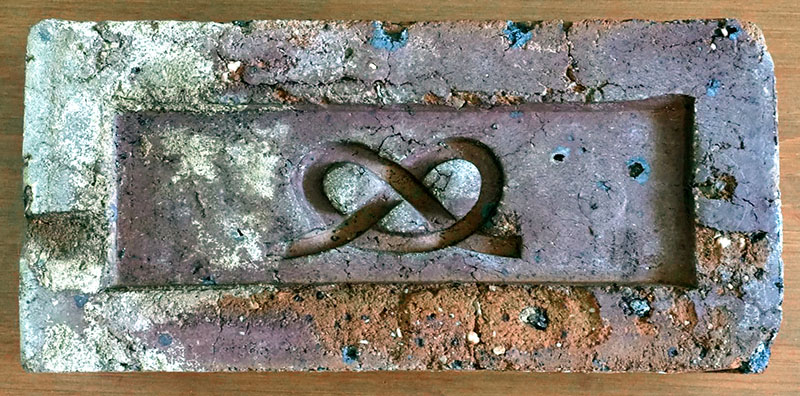
Made by Samuel Webb who had brickworks at Lutwyche & Stafford, northern suburbs of Brisbane, in the 1880s. The coat of arms of Brisbane contain the Stafford knot. The City was named after Sir Thomas Brisbane who was Governor of New South Wales until 1825 of which Brisbane was part till 1869 when Queensland became a State. When he joined the British army in 1789 he was in the Staffordshire Regiment. Knots everywhere !!! Info from Frank Hunt. Found in Brisbane, in a house built in 1885. Photo by Belinda Turner.
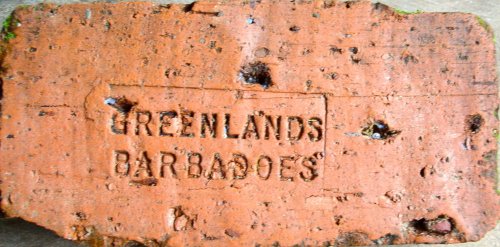
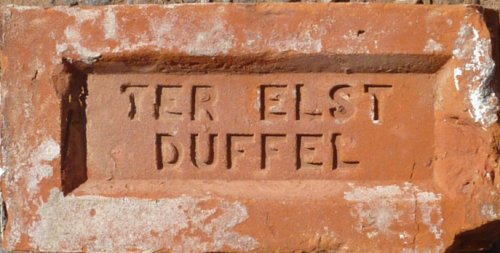
Duffel is a town in the province of Antwerp, Belgium. Well known for the origin of the heavy woollen cloth that makes the duffle coat. Photographed in a brick reclamation yard in Kent. Photo and info by Martyn Fretwell.
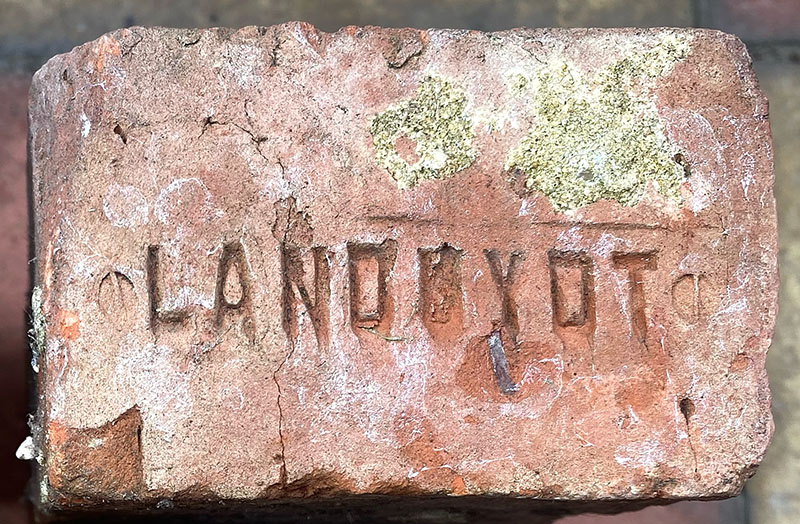
Made at a works in North-West Belgium and used in the construction of an outhouse in Bromley, Kent. Photo by Richard Freeman.
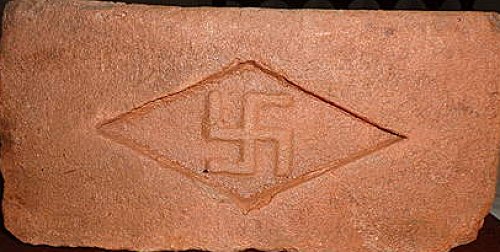
An unusual and somewhat sinister photo of a brick sent by Guilherme Correa. It came from the Southern Cross Ranch near Campina do Monte Alegre, 160 km from Sao Paulo. This was run by fervent Nazis in the 1930's The bricks were discovered recently when a new owner took over the property. The full story may be read here.
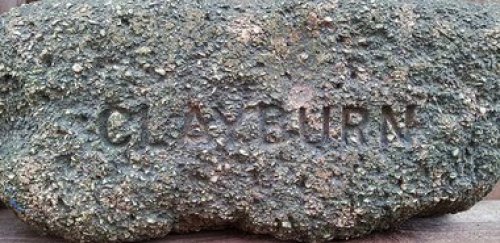
Found in Scotland. Photo by Mark Cranston.
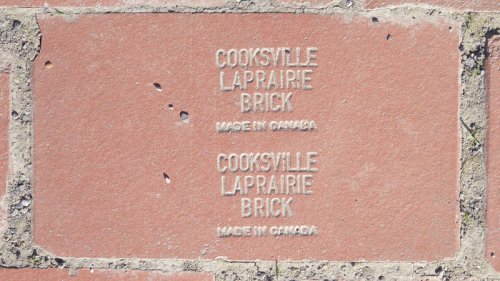
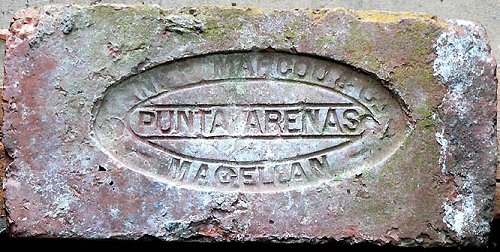
The most southerly produced brick on the website by far! Robert Runyard writes:
This brick was found in the vicinity of the freezer works in Puerto Bories here in southern Chile. The city of Punta Arenas indicated on this brick is located on the straits of Magellan about 150 miles south of the brick discovery location. The shallow impression of the letters makes it difficult to read the first name in the upper left but the word MARCOU is related to an early French resident and investor in this region around the beginning of the 20th century. Among Marcou's other industries (besides brick manufacturing) he was involved in lumber mills and the earliest petroleum exploration in this region.
Chile was not known for extensive use of brick, but the extreme south was influenced perhaps more by European practices than by the distant central region of the country. During an uprising in 1877 nearly all the (wooden) buildings in the regional centre of Punta Arenas were destroyed by fire, and thus the authorities sought to reconstruct the city at least in part with brick. Unfortunately, the first attempt at brickworks fell victim to one of Chile's frequent earthquakes, in 1879. In 1892, Mauricio Braun, the most important business owner in the region at the time, imported brick from Uruguay for the construction of his "palace" on that city's main square. The success and need to emulate such "modern" and more civilised (and functional, for the region) brick construction surely incited Alejo Marcou's development of the brickworks ("Alejo Marcou i Co") and this represented the first successful production for this region.
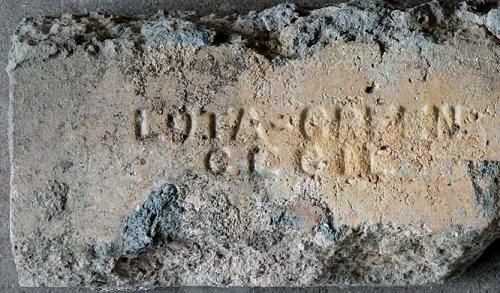
Another one found by Robert Runyard near a now closed animal processing and freezer complex in Puerto Bories in Chilean Patagonia. Lota is known as one of Chile's few coal-producing areas (the mines have been closed for years) and it is located near Concepci'n in southern Chile. The "Lota Green" brickworks (officially "Refractarios Lota-Green Limitada") were founded in 1854. By 1863 this brickworks was providing 2 million bricks a year. The factory went on to produce ceramic dishware, tile, clay pipe, electrical insulators and similar objects. Many of the ceramic items became well known throughout Chile particularly for their "Art Nouveau" style, though the ceramics portion of the factory closed in 1951 while the brick-making continued until about 1997. In recent years the brickworks were purchased by Global Industrial Technologies, for their refractory products division.
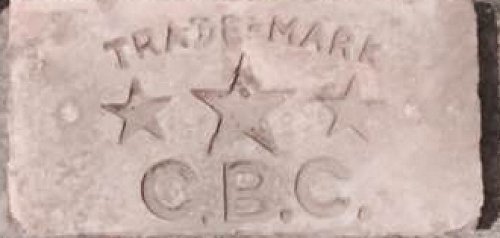
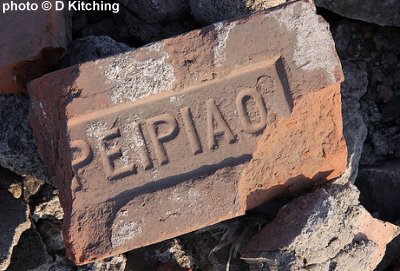
David Kitching writes: Having never previously seen a Chinese brick with a name in the frog, I was surprised to find this example amidst demolished housing in the centre of Beipiao, Liaoning Province, North-east China. The spelling is an alternative pinyin version of the town name.
It seems the hobby is thriving in France as well, here are two examples submitted by Fabien:
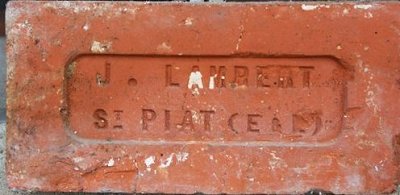
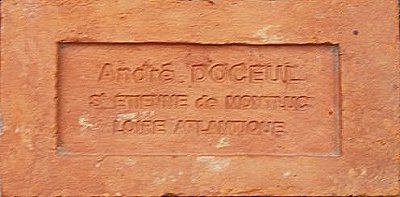
Simon Patterson photographed these three French examples in Coulommiers in north central France:
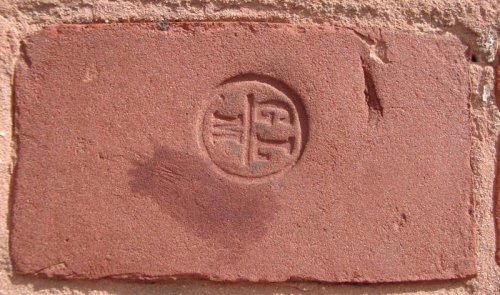
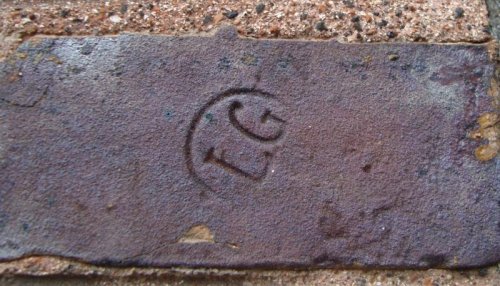
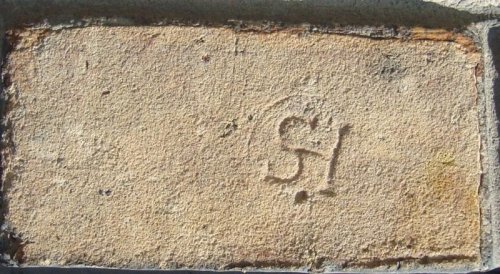
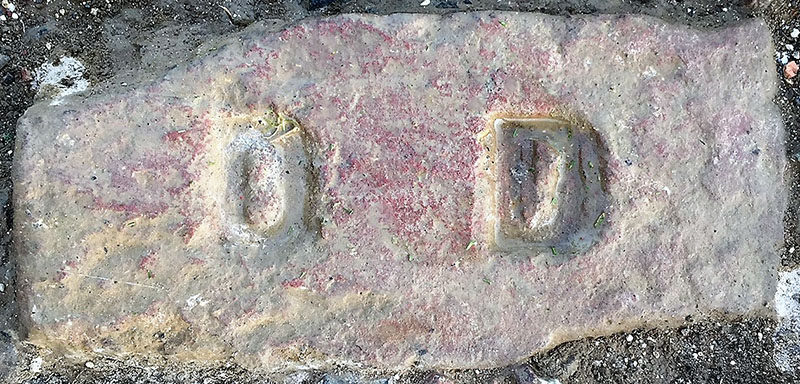
Found near Arras by Nigel Megson.
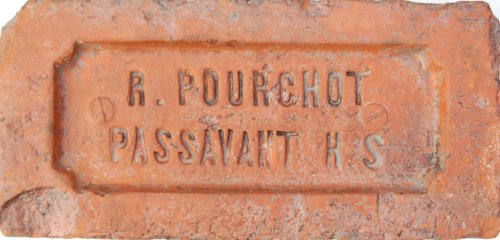
Found in France and made at Passavant-la-Rochere, Haute-Saone. Image PRBCO.
.jpg)
Found by Frank Lawson near Verdun in France. Made some 30 miles to the west of Verdun in Ste Menehould.
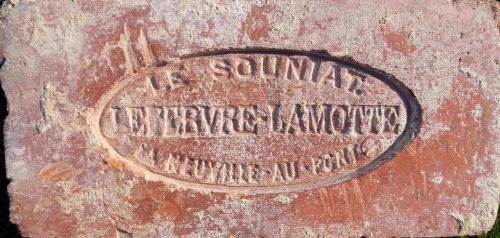
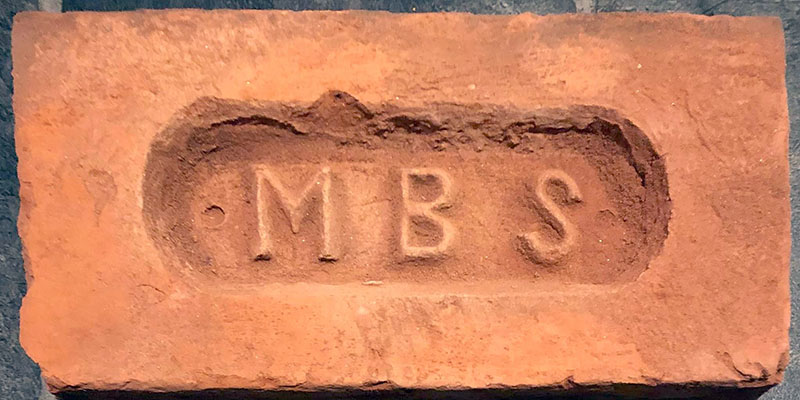
Manchester Brick Specialists is a supplier and importer of bricks and this example was probably made somewhere in Asia. Photo by Elaine Hill who found a pallet of these in Manchester.
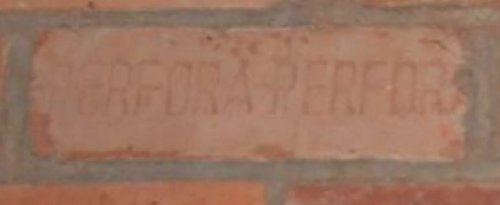
Thanks to Christian Clavel for these three photos of bricks used in the infamous French penal colonies in French Guyana. These colonies were made famous by Henri Charriere and the film based on his experiences: 'Papillon'.
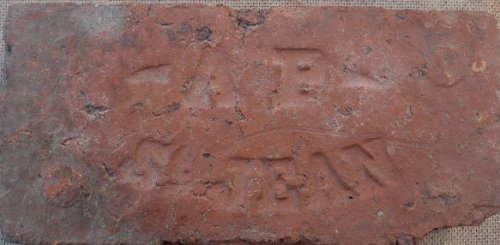
Administration Penitentiaire ( St Jean du Maroni)
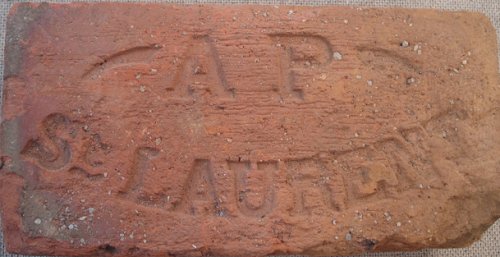
Administration Penitentiaire (St Laurent du Maroni)
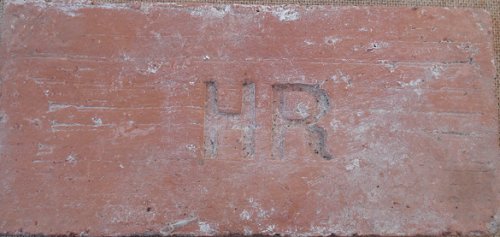
H.R for hopital de la reclusion.
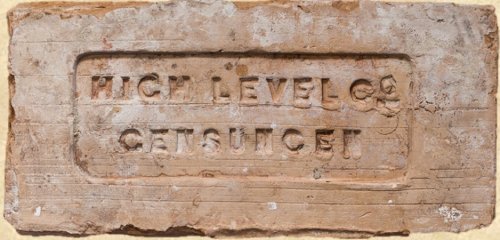
Bricks were made by Englishmen during the years 1880/ 1881. The High
Level Company, Manchester started the production of bricks near the
village of Gensungen. Today it is located at the small city of
FELSBERG, Germany, near Kassel. The company finished in 1883.
photo and info by Heinz K'rner.
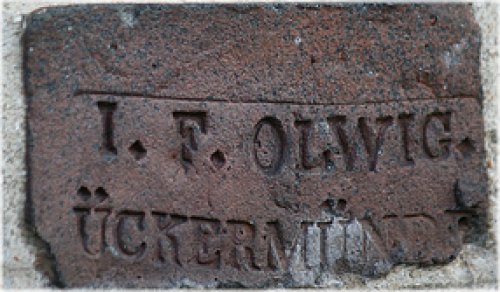
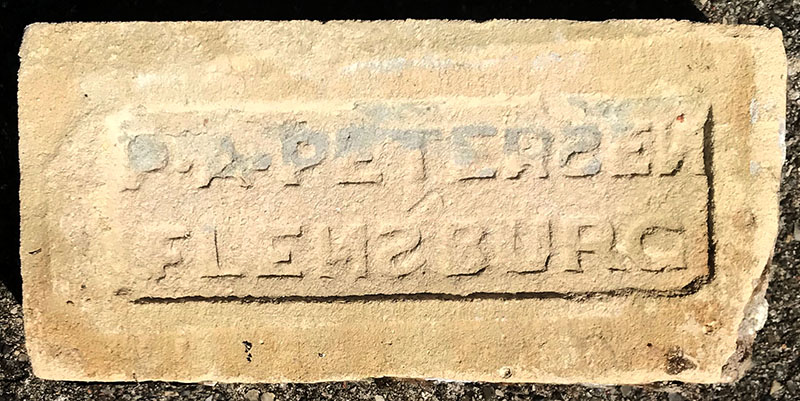
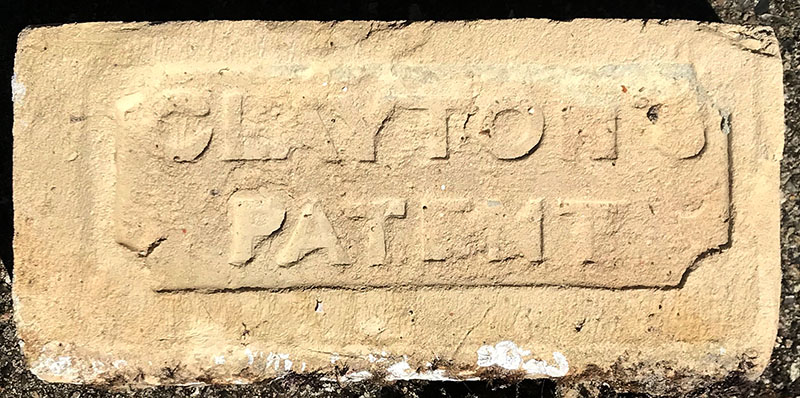
Found and photographed by Jess Jessen-Klixbüll in Denmark
while diving on the shipwrecked Alexander.
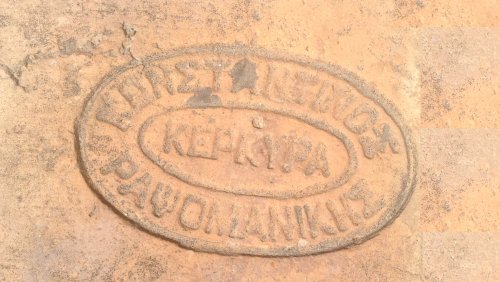
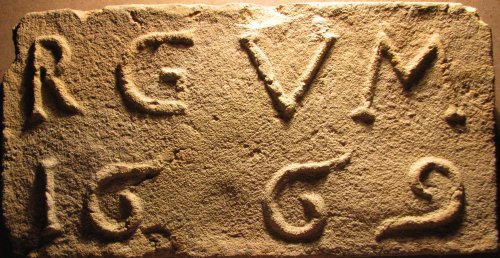
Rajmund Graf von Montecuccoli, Austro-Hungarian general, chief
captain of Győr City. Made in 1669 and the oldest brick on
the website. Photo sent by Dr. Szűcs Istv'n. There is
a Hungarian brick forum, with 30,000(!) bricks online here
.
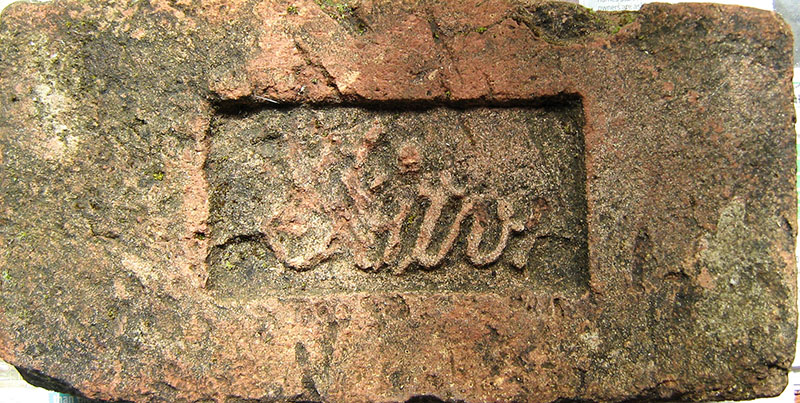
ISTV, This brick is produced in Budapest in the Istvan brick factory.Thanks to Gabriel for the info. Photo by courtesy of the Richard Symonds collection.
.jpg)
Frank Lawson sent this photo of a brick which came from
Delhi. Frank writes: ' I am told that the initials RBF stand
for Ram Building Fund and that the bricks were subscribed for by
the public to fund the building of a temple. The swastika is a
Hindu religious symbol which is thought to be auspicious and is
often found on Indian bricks as it is supposed to bring good
fortune'.
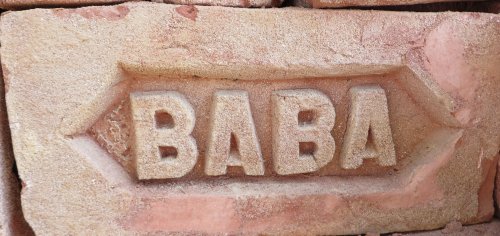
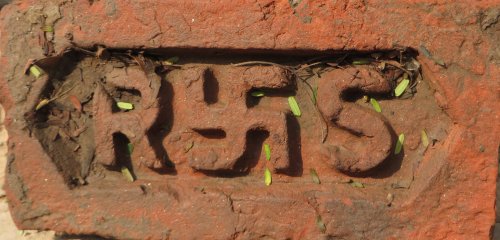
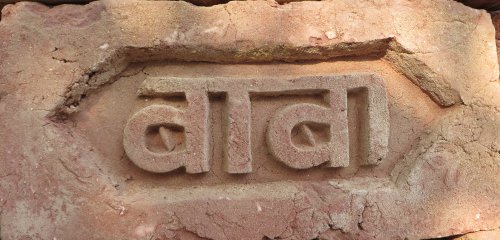
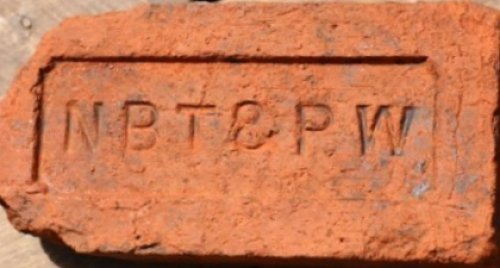
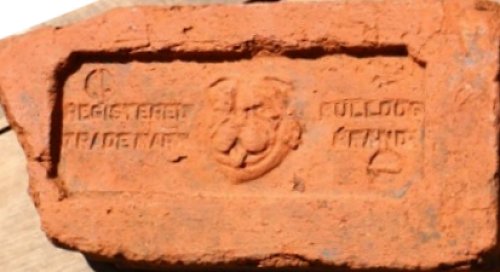
.jpg)
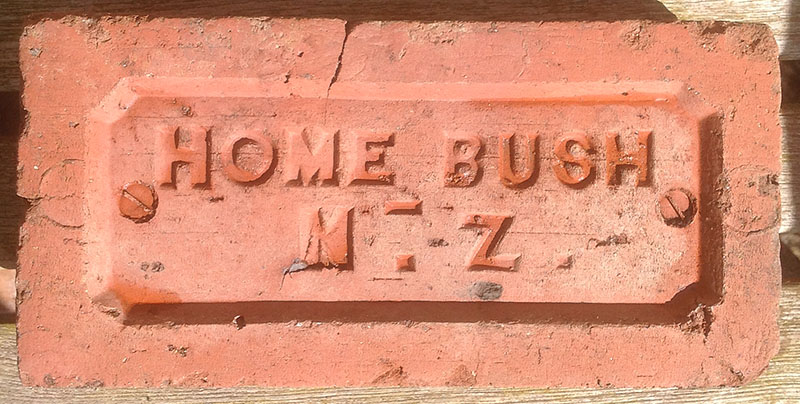
Near Darfield on the South Island of New Zealand. Photo by Jess Aston.
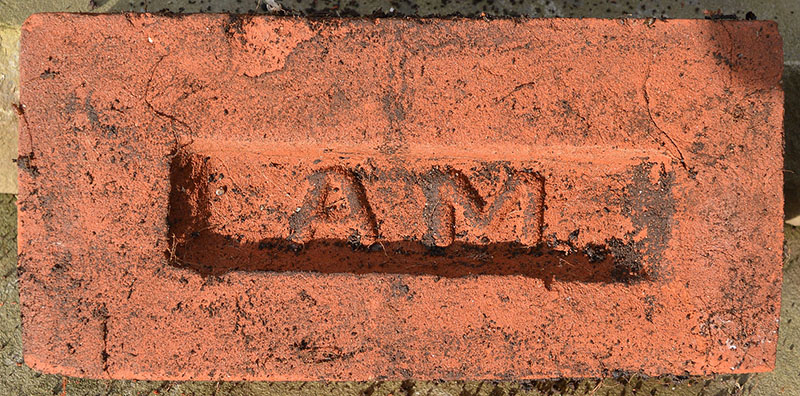
Photo by Frank Lawson.
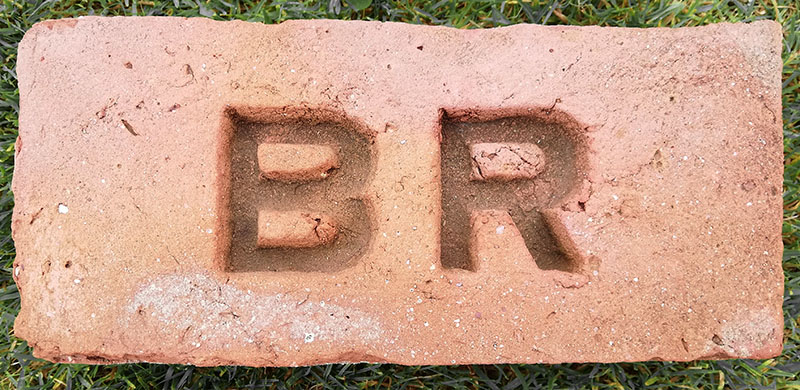
Found in a Dorset reclamation yard by Andrew Florey.
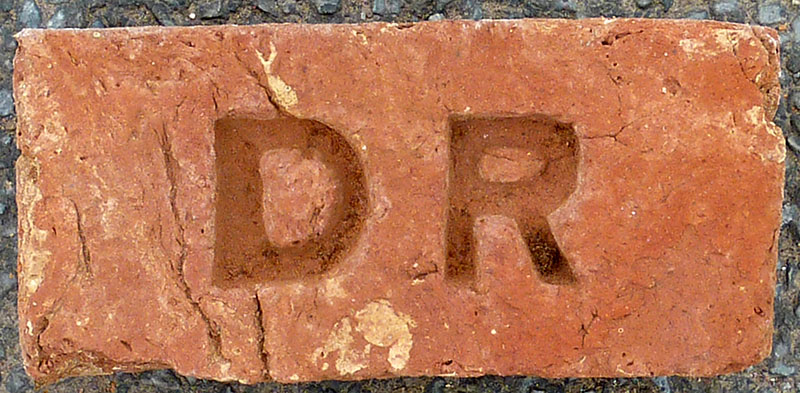
Photo by Martyn Fretwell.
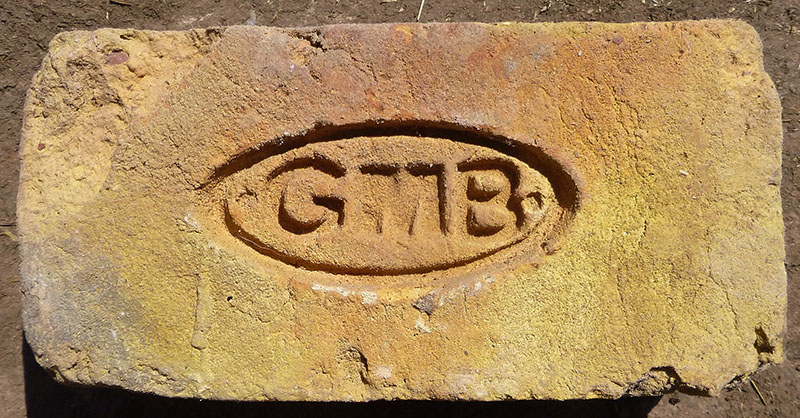
Photo by Frank Lawson.
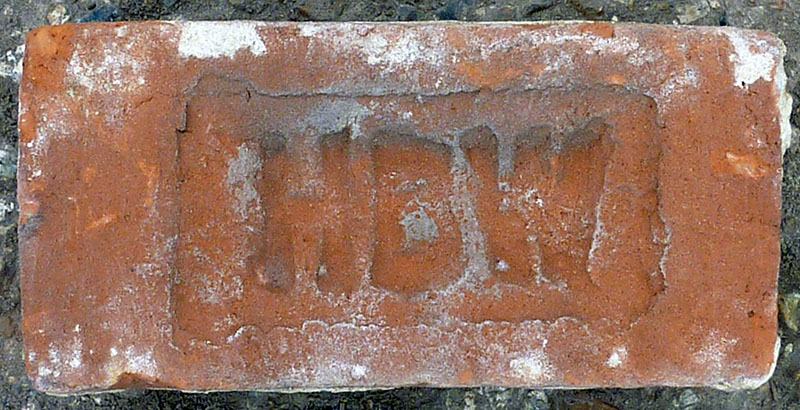
Photo by Martyn Fretwell.
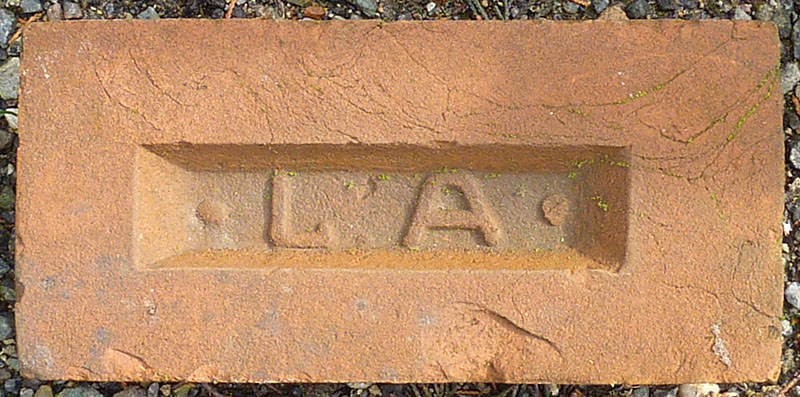
Photo by Martyn Fretwell.
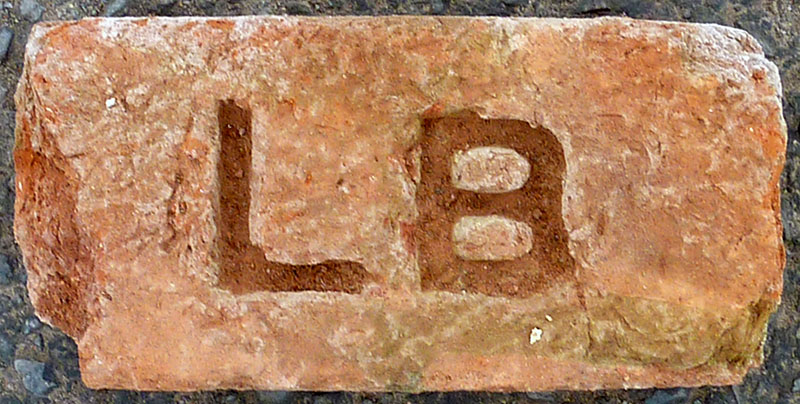
Photo by Martyn Fretwell.
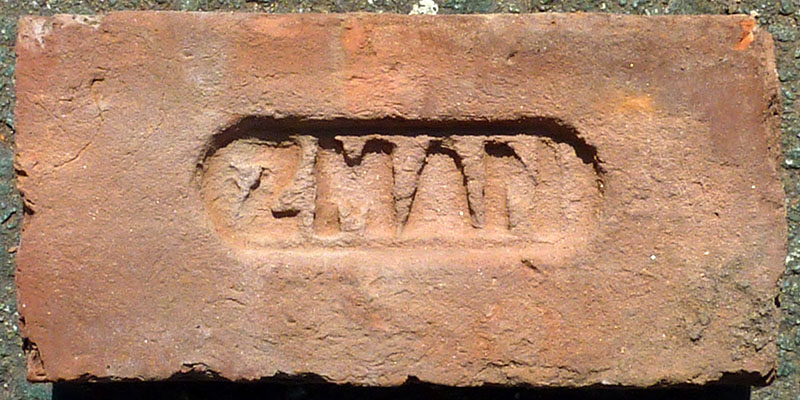
Photo by Martyn Fretwell.
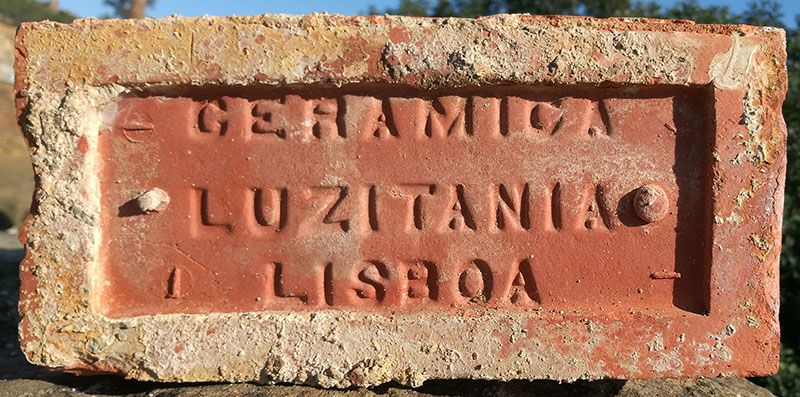
Lots of information about this interesting business can be found here. Photo and info from Paul Jones
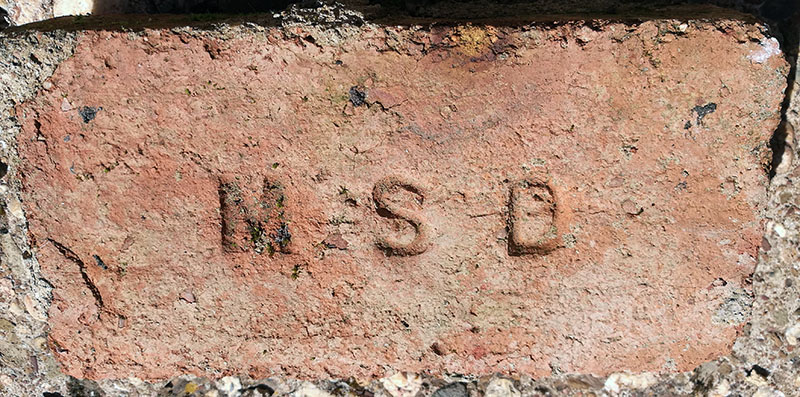
The São Domingos copper mine is in Corte do Pinto, Alentejo, Portugal. It operated from 1854 to 1966 and bricks appear to have been manufactured at the mine site. Photo by Paul Jones
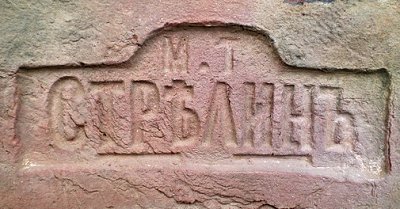
An M.T.Strelin brick found in St Petersburg by Vladimir N Smirnov. This is a very famous brickyard est. 1875 and the whole Strelin's family (the father and later 2 sons) owned 3 different brick plants around St.Petersburg. Vladimir has a collection of over 800 Russian bricks found in the St Petersburg area. The bricks all pre-date the 1917 Revolution after which the name stamping of bricks ended. His website may be viewed here, it is in the Russian language.
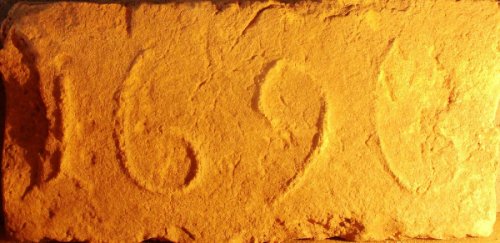
A brick from 1696, one of Peter Gyekes extensive collection of Slovakian and Hungarian bricks.
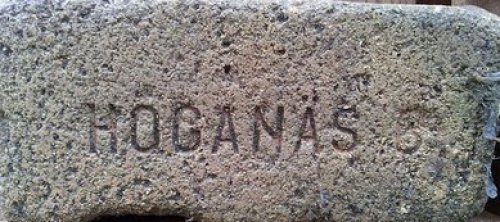
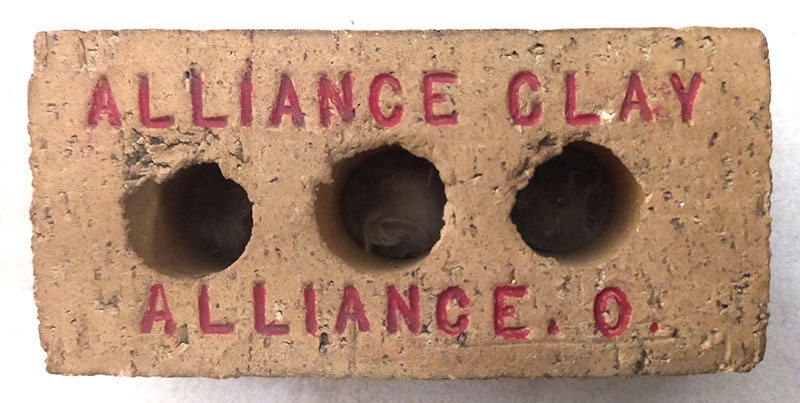
The Alliance Clay Product Company in Alliance, Ohio, was founded in 1906, by James B. Wilcox. By 1907, the single plant was producing 18,000 bricks a day. Plant No. 2 was built in 1914, followed by Plant No.3 in 1924, for a total production capacity of 275,000 bricks a day. Gas burners were installed in kilns on site beginning in 1929, following the discovery of a daily supply of 1,500,000 cubic feet of gas on the property. Production began to decline in the 1960s, finally ceasing in 1970. Photo By Andrew Morley.
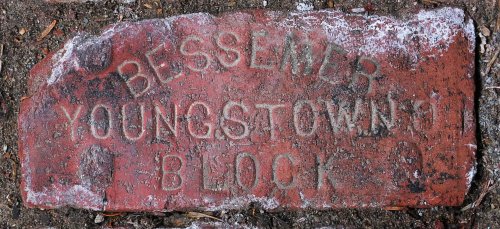
Bessemer, Youngstown, Ohio. Found in a wall at the Millstreet Brewery in Toronto Canada. This paving brick has four raised parts to stop horses slipping. Photo courtesy of John Biggs.
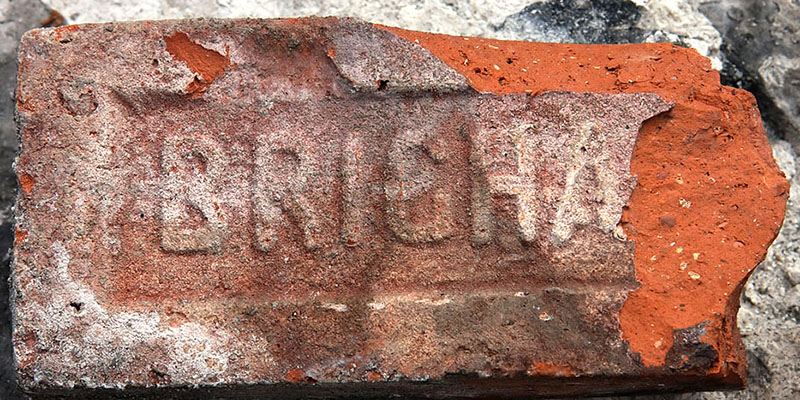
David Kitching writes: A visit to the former Hathern Station Brickworks in Leicestershire yielded a surprise in this brick which is a product of the Harry Brigham & Bros yard on the Hudson River at East Kingston, New York state. Brickmaking commenced here in 1904. How did it come to be in the UK? The answer is that there is still design undertaken here for terracotta restoration work and the brick was attached to the back of a piece that had been shipped over from a building in New York so that a replacement could be made by Shaws of Darwen who maintain a design section here after the demise of the Hathern operation when Ibstock closed the site.
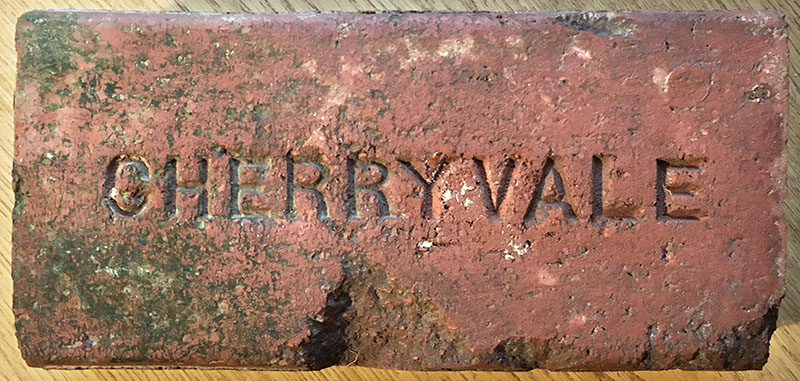
Made in one of the six brickyards in Cherryvale, Kansas, and found in Jay, Oklahoma. Photo by Joanna Downing.
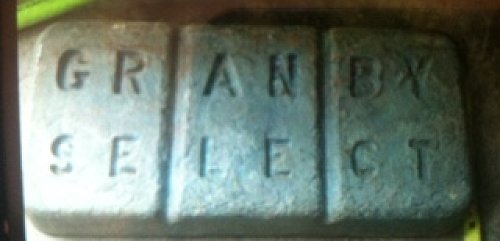
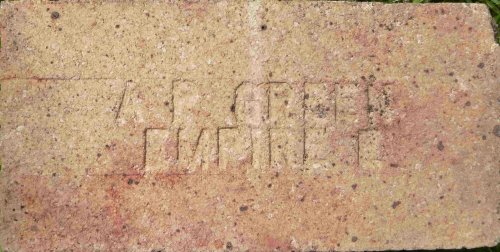
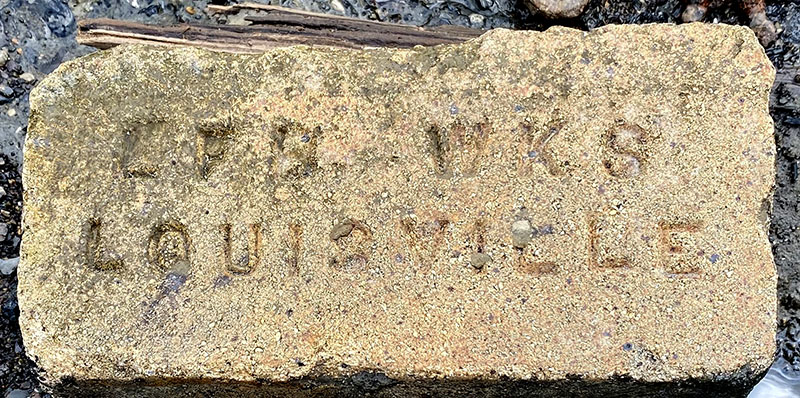
Louisville Fire Brick Works has been making bricks for over 125 years. This brick was found on the Thames foreshore at Greenwich by Marie-Louise Plum.
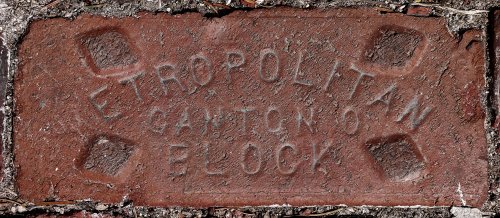
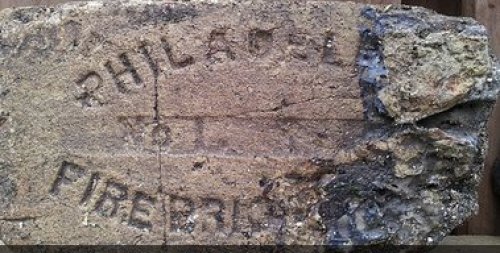
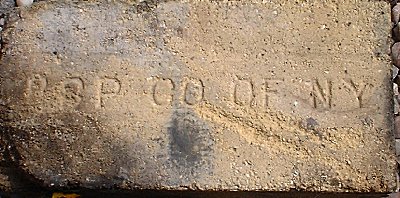
I found the above in a Welsh slate quarry. I understand it is an American brick made by the Robinson Sewer Pipe Company of New York, thanks to Fred Rieck for the information. How it ended up in North Wales is another matter.

Rick Calou has advised that he found a large pile of these bricks in San Diego, California. The United Brick CXo seems to have had a presence in a number of states. This example is from the Union Brick Company that operated at Rose Canyon, north of San Diego, in San Diego County, California, from 1912 to 1963. Info by Dan Mosier of the California Bricks website. Brick from the Henry Holt collection, photo by David Kitching.
.jpg)
An American brick found by Robert Runyard in southern Argentina. A long way from where it was made on the Hudson River.